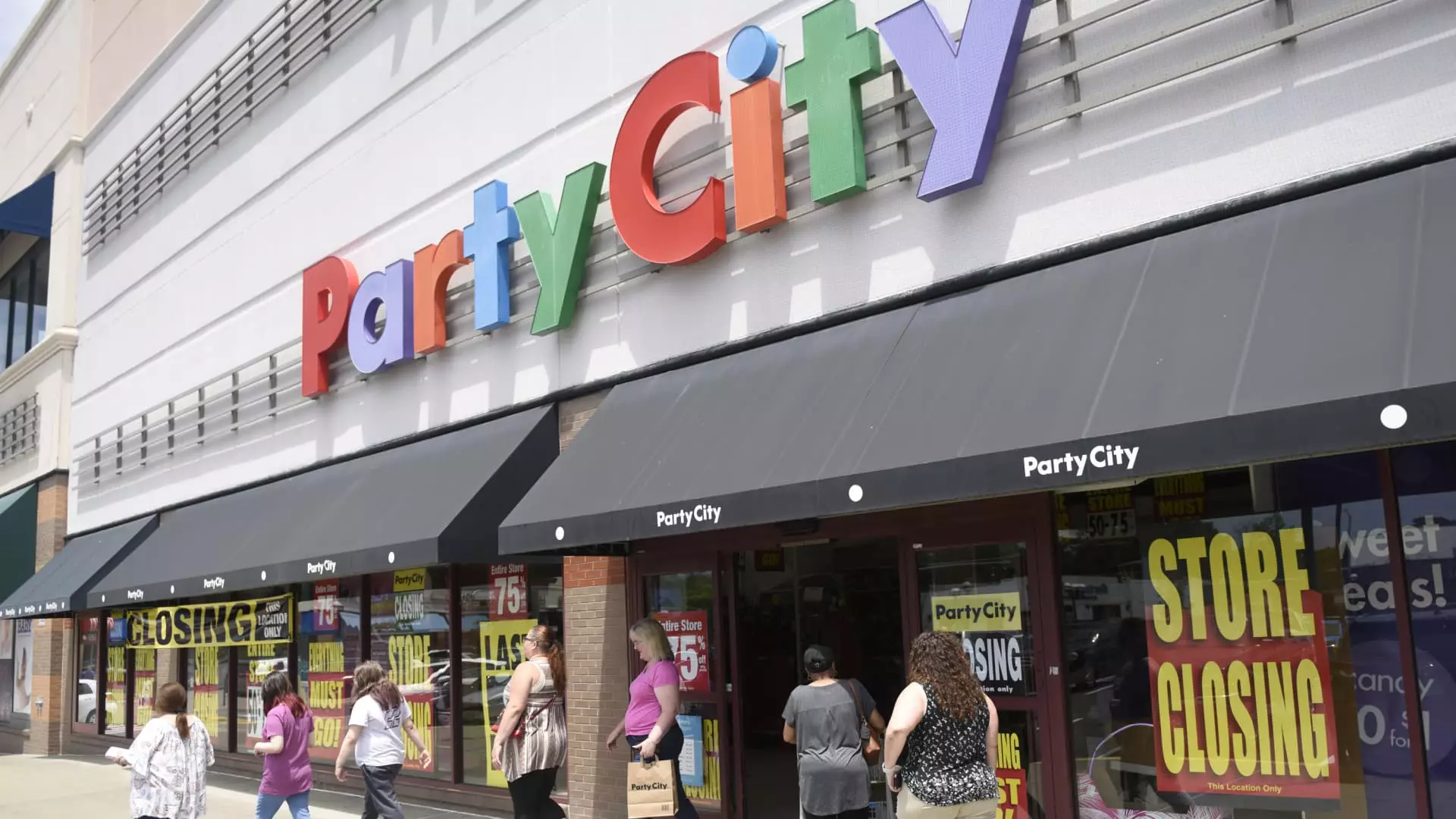The retail landscape in the United States is undergoing a dramatic transformation, characterized by an alarming spike in store closures reminiscent of the tumultuous days during the Covid-19 pandemic. In 2024, major retailers such as Party City and Macy’s shuttered approximately 7,325 stores, marking the highest level of closures recorded since the initial pandemic wave in 2020, which saw nearly 10,000 dangerous storefronts close their doors. As we navigate through 2025, these closures are projected to escalate, with reports indicating that a staggering 1,925 closures have already been announced within the first few weeks of the year. The retail advisory group, Coresight Research, anticipates a total of around 15,000 store closures by the end of the year, revealing a stark reality where a few industry giants thrive while numerous other retailers struggle to survive.
The ongoing retail contraction accentuates a critical divide in the industry: top-performing corporations such as Amazon, Costco, and Walmart are capturing a substantial share of consumer spending, leaving many smaller and specialty retailers wrestling with stagnation or outright failure. The past year has seen a notable increase in retail bankruptcies, jumping from 25 in 2023 to 51 in 2024. Many of these failing companies are household names, like Party City, which now confronts a tumultuous closure schedule extending into 2025. This tension between thriving giants and struggling retailers illustrates a transformation in consumer preferences, where value and convenience have become paramount determinants of shopping behavior.
Consumer behavior has taken a significant turn, with robust spending recorded over the holiday season. Sales figures rose by 4% from the previous year, totaling $994.1 billion between late November and late December, as reported by the National Retail Federation. However, this spending surge does not translate evenly across the retail landscape. Many specialty retailers are finding their market share diminished, impacting their viability. Notable failures include discount chains like Big Lots, which announced that it would close all stores following a failed sale, and Joann, which sought bankruptcy protection twice within a year.
This struggle is not isolated; even larger legacy chains are feeling the heat. Companies like CVS and Walgreens are constricting their operations, while department store operator Macy’s has acknowledged plans to close around 150 of its flagship locations by early 2027, concurrently experimenting with smaller concept stores.
The dynamics propelling these closures can largely be attributed to intensified competition rather than a decrease in consumer demand. Coresight researcher John Mercer notes that certain retailers face heightened competitive threats without experiencing diminishing demand. Rather, a redirection of spending towards a handful of successful competitors is at play. Unique challenges also arise when a key mall anchor such as Macy’s exits; that often precipitates a fall-out effect, causing smaller retailers in proximity to struggle or ultimately shutter.
Shifting demographics and population patterns following the pandemic have further altered navigating the retail landscape. Among the aftermath, traditional retail foot traffic has diminished, leading companies to reassess their store placements and overall footprints.
Despite the grim outlook projected for store closures, there remains a flicker of optimism for the retail sector. In 2024, the number of store openings surged to 5,970, the highest since Coresight began monitoring persistent trends in 2012. Projections for 2025 estimate an estimated 5,800 openings. Retailers such as Aldi, JD Sports, and Burlington Stores have led the way, suggesting that while some elements of the industry are languishing, others are seizing the opportunity to expand.
In an era where e-commerce is intertwined with shopping habits, many retailers are rethinking their strategies, focusing on a balance between physical and online sales. As traditional players, like Kohl’s, announce upcoming closures—27 stores planned to shutter by April 2025—it becomes evident that adaptability is essential for survival moving forward.
The evolving retail landscape in America is marked by stark contrasts between winners and losers amidst a climate of transformation. As larger players dominate the market and many retailers succumb to closures and bankruptcies, the future will be dictated by a company’s ability to adapt and innovate. The retail industry, while facing numerous challenges, continues to present opportunities for those willing to creatively rethink their strategies and approach consumer demands head-on. As we witness an ever-evolving marketplace, investors and retail stakeholders must stay vigilant to understand which companies are poised for growth amidst the challenges that lie ahead.

